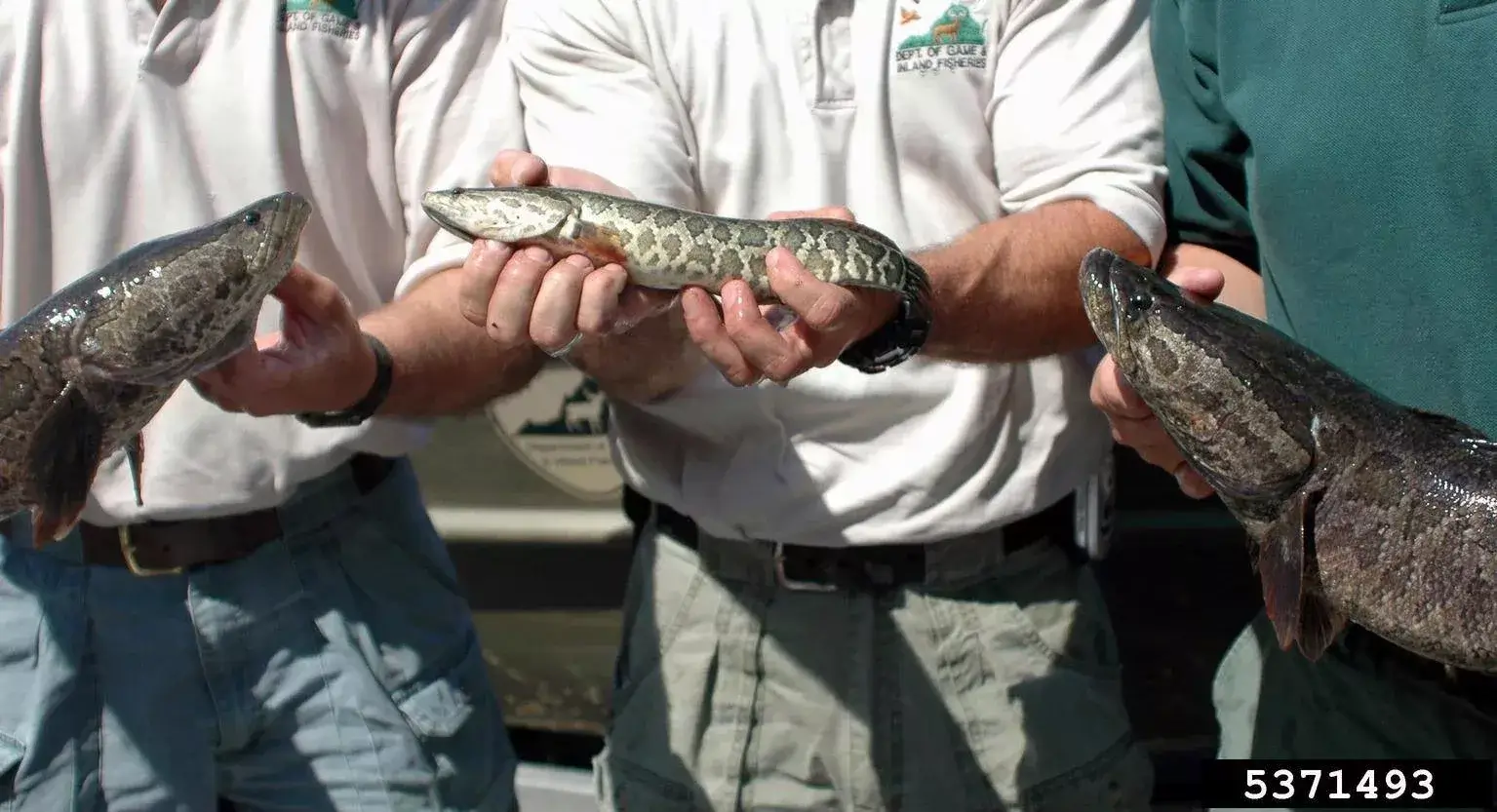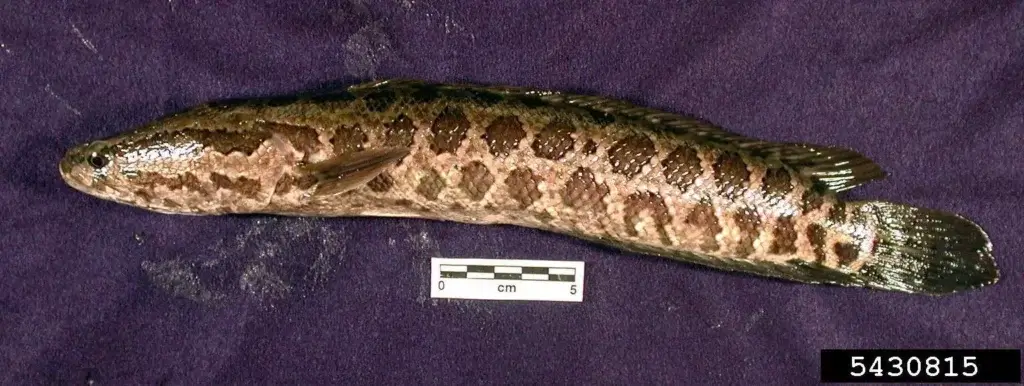
The northern snakehead fish (Channa argus) has been identified as an invasive aquatic fish across the United States. Snakehead fish got their name because of their long, cylindrical body plan and large scales on their head that give them a snake-like appearance. In the United States, there are four species of snakeheads: Channa argus (northern snakehead), Channa micropeltes (giant snakehead), Channa marulius (bullseye snakehead), and Channa maculate (blotched snakehead). The northern snakehead fish has succeeded in establishing breeding populations in the wild. This species is of concern because it is a top predator and disrupts the natural aquatic feeding structure in ecosystems.

Snakeheads are an aquatic fish that live in freshwater streams, rivers, wetlands, or ponds. They prefer low moving to stagnant waters. Snakeheads can survive the cold winters and low oxygen environment. Some snakeheads are capable of breathing atmospheric oxygen and may be able to jump out of the water to be found on terrestrial land near aquatic systems. During the spawning season, northern snakehead fish prefer shallow waters with macrophyte cover (Lapointe et al. 2010). Nests are made by first clearing an area and then weaving aquatic vegetation into a column to hold and protect eggs.

It is believed that the northern snakehead fish entered the United States when aquarium owners discarded their unwanted exotic captive species into local waterways. The fish is also an important food source in other countries and could have been intentionally released into waterways to create a local food source for fisherman here in the United States. Even though it is illegal in some states to possess a snakehead fish, they are utilized in some restaurants and are available for purchase online. Northern snakehead fish can spread by swimming underwater and are also capable of breathing out of the water to move short distances on land. Snakehead fish breeding occurs during the summer months (June to August). However, there is not a full understanding of the details of the snakehead fish reproductive cycle yet as their nesting behaviors in their introduced habitat differ from those in their native range (Gascho Landis and Lapointe 2010). Gascho Landis and Lapointe (2010) did find that parent fish will stay with their young up to 4 weeks to increase juvenile survival.

Northern snakehead fish are strong predators at the juvenile and adult stages of their life cycle. Many native species are outcompeted for food resources. Small prey, such as zooplankton, larvae, and small fish and crustacean populations may be threatened by feeding juvenile snakehead fish. Adults devour fish, crustaceans, small amphibians, reptiles, and some birds and mammals. During the spawning season and after the young are born, snakehead fish may become very aggressive towards trespassing species. If the northern snakehead fish becomes established in the United States, it could cost millions of dollars in management, and ecological and recreational damages.

Northern snakehead fish have long, narrow bodies with long dorsal and anal fins. They have a large mouth and protruding jaw with canine-like teeth. The fish get their name from the enlarged scales, shape and irregular, blotchy coloration on their head that give a snake-like appearance. Snakehead fish may vary size depending on their age and location, but grow to be up to 4 feet in length. Invasive northern snakehead fish are easily confused with the native bowfin and burbot. Check out a U.S. Fish and Wildlife Service factsheet for a comparison of the northern snakehead fish to the burbot and bowfin here.



All snakehead fish have been assigned injurious wildlife status. Under the Federal Lacey Act, these fish and viable eggs cannot be moved through importation or interstate transport. Once populations are found, efforts are made to eradicate and control snakehead fish.
Waters with snakehead fish presence can be treated using chemicals. Previous control efforts have found that Rotenone has been successful in lakes and ponds. However, chemical control methods should be done by professionals since the chemicals may effect or kill non-target fish species and also may require permits for use. If approved to work with chemicals, always follow the instructions on the label.
If you catch a snakehead fish, do not release it back into the water. Kill it, freeze it in a double bag and then report the fish and its location to a local natural resource agency for documentation. To prevent more occurrences from happening, it is important to control the current populations and also to educate others on the importance of not releasing or transporting exotic species to new ecosystems.

The northern snakehead fish was first discovered in the United States in California in 1997. This species is considered established in Virginia, Maryland, Pennsylvania, New York and Arkansas. Individual fish have also been collected in California, Florida, Illinois, Massachusetts, Delaware and North Carolina. Established breeding populations in the Potomac River in Maryland and Virgina were discovered in 2004. Genetic evidence shows that the introduction in the Potomac was unrelated to previous infestations in Maryland (Starnes et al. 2011). In New York, the first documentation was reported in 2005 at Meadow Lake in Queens and then again in 2008 in a stream in Wawayanda, New York. USGS interactive distribution point map
This map shows confirmed observations (green points) submitted to the NYS Invasive Species Database. Absence of data does not necessarily mean absence of the species at that site, but that it has not been reported there. For more information, please visit iMapInvasives.
